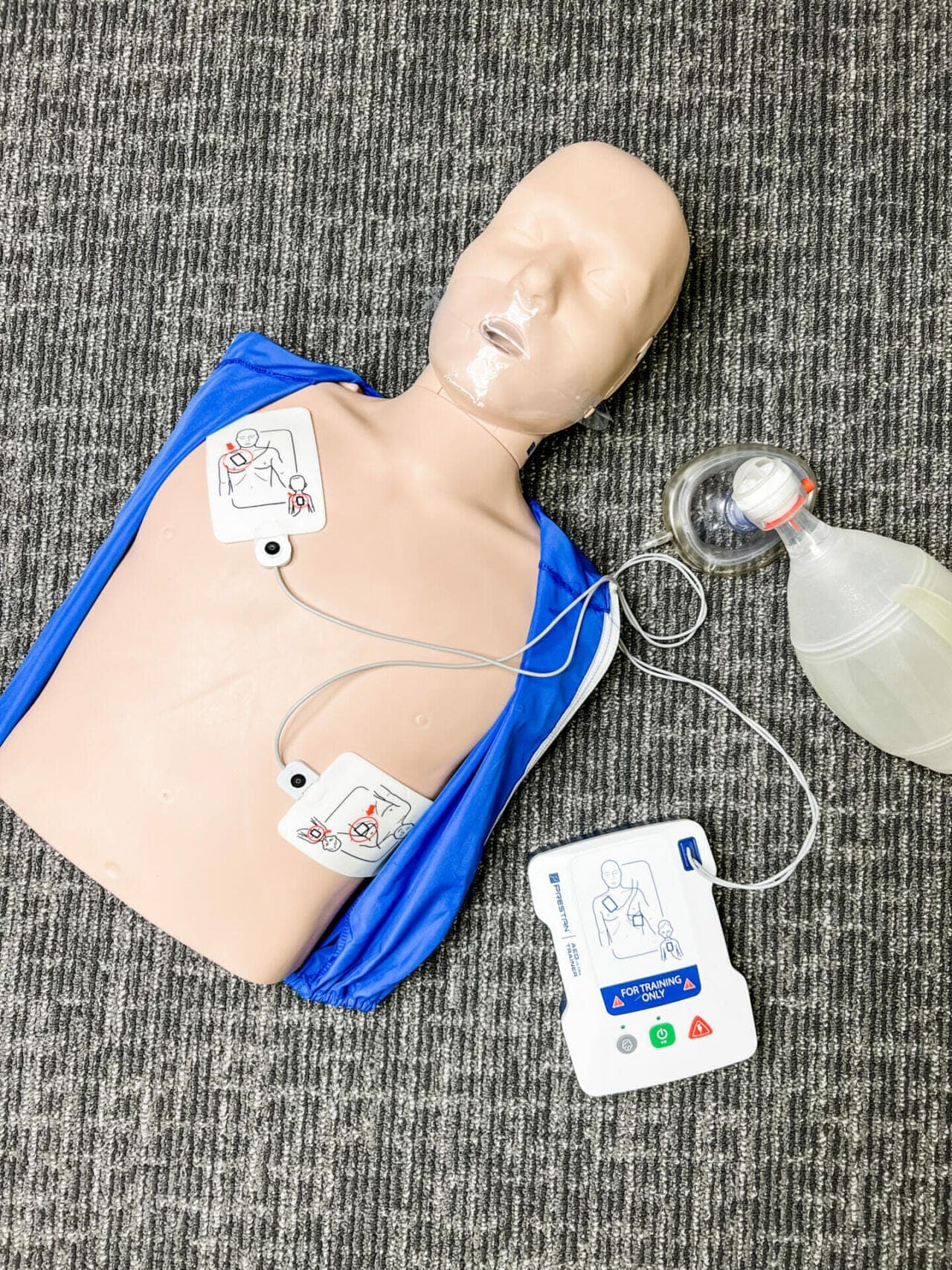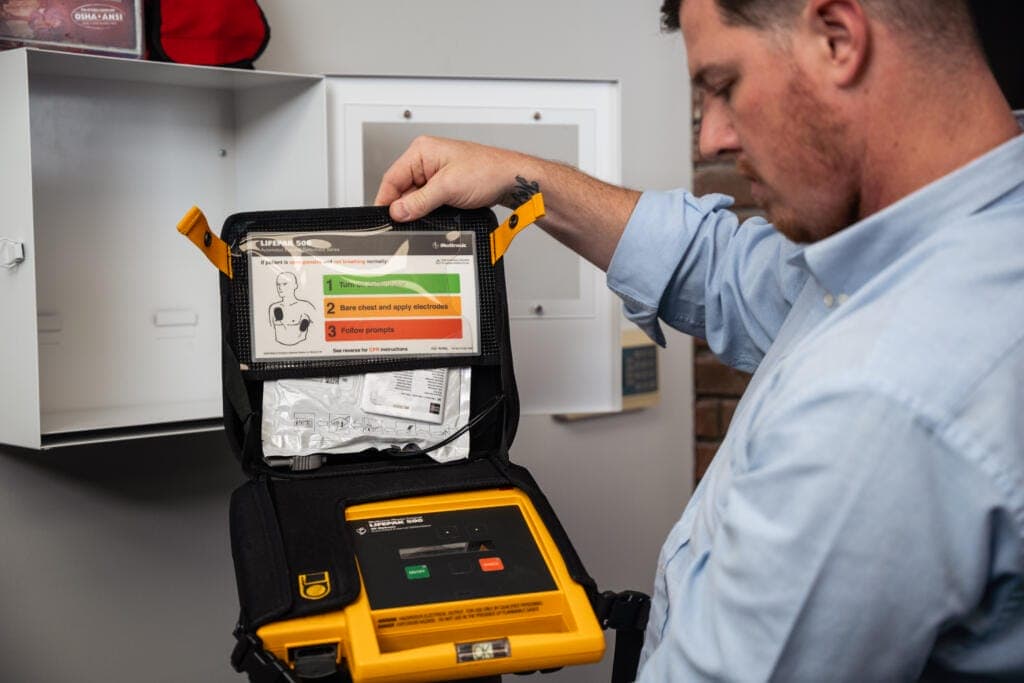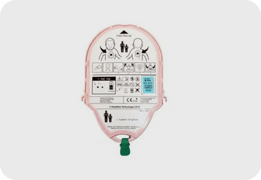Can You Use Pediatric/Child AED Pads on an Adult?

While it’s uncommon, there are circumstances when people find their AED to not have working adult pads. Typically this is because the adult pads have been used or expired. So, the question arises… In the situation where there are no adult AED pads, would it be acceptable to use child AED pads?
We will discuss the American Heart Association (AHA) Guidelines and the difference between adult and child AED pads. Finally, we will present the arguments for and against using child pads on adult victims of sudden cardiac arrest. We do present a conclusive answer to this question. Read on to find out!

American Heart Association Guidelines
To begin, let’s discuss the AHA guidelines that speak to this topic. In all courses that cover cardiopulmonary resuscitation (CPR), proper AED use is taught. The guidelines are fairly simple in that responders should first turn on and then follow the prompts from the AED.
The AED will usually give vocal prompts on where to place pads. Next, the AED will tell the responder to step back so it can analyze the heart rhythm. Finally, the AED will advise on whether or not you should continue CPR or deliver a shock to the patient. Depending on if the AED is automatic or semi-automatic, you may need to push a button to deliver the shock.
However, in this process, it is up to the user to discern whether or not to use adult or child pads. The AHA advises that children include anyone who has not experienced puberty, notated by breast development and hair growth. However, the AHA guidelines state that if there are no child pads, adult pads can be used on a child. The guidelines conversely say, “Do not use the child pads for an adult.”
At this point it’s important to note that any AHA instructor should only teach what is in the guidelines given by the AHA during an AHA course. AHA courses and materials are copyrighted and additional segments should not be added to the course. However, The AHA does permit adding content before or after class as long as it is remarked that the content is not from the AHA.
The Difference Between Adult and Child Pads
Various AED’s have different ways of functioning, however in most AED’s, the child pads essentially throttle the shock given to the victim. Typically, on child SCA victims, an AED puts out 50 Joules in pediatric mode. However, with adults pads, 150 Joules is the typical output from an AED. While adult pads can be used on children when no pediatric pads are available, it is generally accepted that pediatric AED pads are not useful on adults.
The AHA Basic Life Support (BLS) student manual reads “Child pads deliver a shock dose that is too low for an adult and will likely not be successful.”

The Argument For Using Child Pads on an Adult
Any experienced CPR instructor, will inevitably be asked ‘Can I use child/pediatric pads on an Adult CPR Victim?’ The most straightforward answer to this question should be that the AHA guidelines do not recommend this. However, instead of this, many make the assumption that ‘Child pads are better than no pads.’ The assumption is that, you might as well try. It’s unlikely that you are going to make a dead persons condition worse, right?
So, the question is, could 50 Joules be enough to change an adults heart rhythm? The short answer is probably not. However, isn’t something better than nothing? There’s always a chance anything could happen, but speaking on the science that is known- we would not recommend this path.
The Argument For NOT Using Child Pads on an Adult
When performing CPR, there is a big emphasis on minimizing hands off time with a victim. The AHA guidelines suggest an 80% Chest Compression Rate. This means that during the course of CPR, hands should be performing chest compressions 80% of the time. The other 20% of the time may be used for using an AED or delivering rescue breaths.
In the event you don’t have a functioning AED, the chest compression fraction should be hire than 80%. A responders job during CPR is first and foremost to keep blood circulating through the body. If you are spending time fiddling with an AED that is not properly equipped for your victim, then you are losing time where blood could be circulated. For every second without blood circulation, victims are losing brain and heart cells. With only a slim chance that an AED could be effective, you are putting the victim in a worse position.
The AHA BLS guidelines also tell us, “It is better to provide high-quality CPR than to attempt to shock and adult victim with child pads.”
Conclusion
The AHA guidelines does not advise using pediatric AED pads on adults. While some people may think it’s ‘worth a shot,’ the time lost trying could be used performing CPR and circulating the victim’s blood to vital organs.
Furthermore, while this question is worth discussing, it’s important to note that the circumstances this scenario may arise in are slim. The most popular AED’s on the market: Defibtech, Heartsine, and Zoll all come with just adult pads. AED’s are usually sold only with adult pads. You will have an option to also purchase pediatric or child pads as well. It is unlikely someone would have child/pediatric AED pads instead of adults.
Learn More: AED’s in Movies Vs. Real Life.
Scenes from James Bond & ET discussed:


